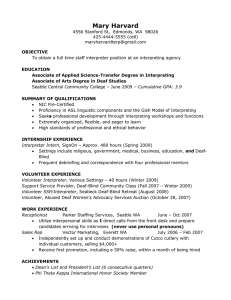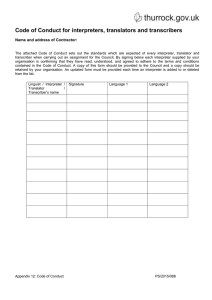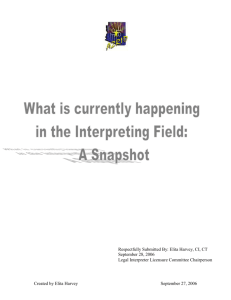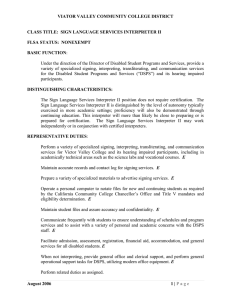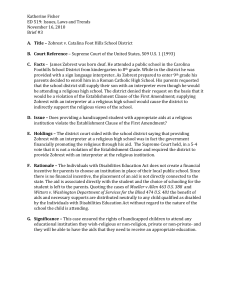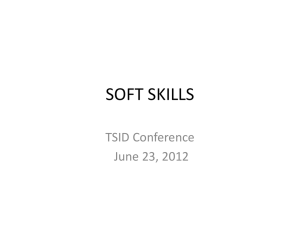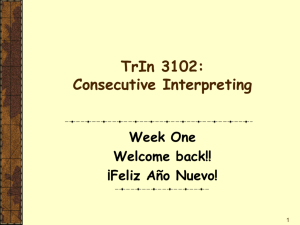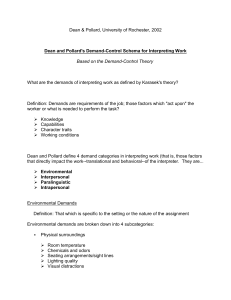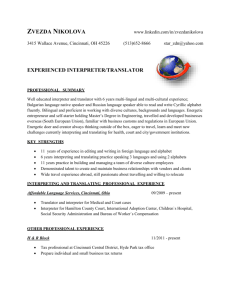OBSERVATION JOURNAL ENTRIES
advertisement
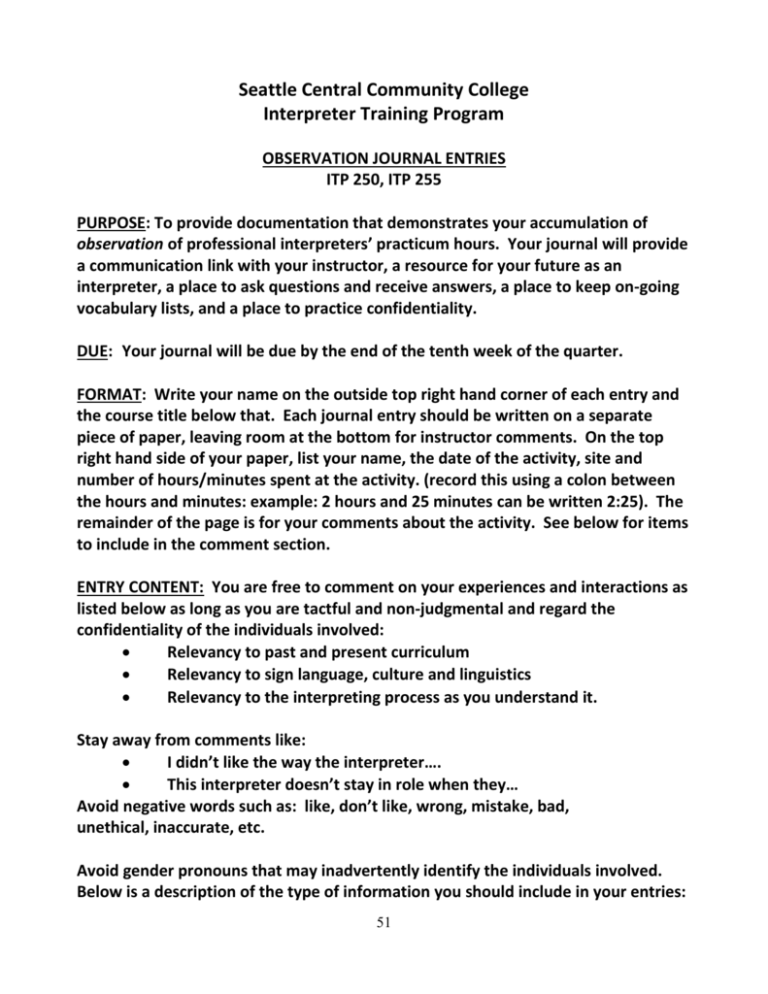
Seattle Central Community College Interpreter Training Program OBSERVATION JOURNAL ENTRIES ITP 250, ITP 255 PURPOSE: To provide documentation that demonstrates your accumulation of observation of professional interpreters’ practicum hours. Your journal will provide a communication link with your instructor, a resource for your future as an interpreter, a place to ask questions and receive answers, a place to keep on-going vocabulary lists, and a place to practice confidentiality. DUE: Your journal will be due by the end of the tenth week of the quarter. FORMAT: Write your name on the outside top right hand corner of each entry and the course title below that. Each journal entry should be written on a separate piece of paper, leaving room at the bottom for instructor comments. On the top right hand side of your paper, list your name, the date of the activity, site and number of hours/minutes spent at the activity. (record this using a colon between the hours and minutes: example: 2 hours and 25 minutes can be written 2:25). The remainder of the page is for your comments about the activity. See below for items to include in the comment section. ENTRY CONTENT: You are free to comment on your experiences and interactions as listed below as long as you are tactful and non-judgmental and regard the confidentiality of the individuals involved: Relevancy to past and present curriculum Relevancy to sign language, culture and linguistics Relevancy to the interpreting process as you understand it. Stay away from comments like: I didn’t like the way the interpreter…. This interpreter doesn’t stay in role when they… Avoid negative words such as: like, don’t like, wrong, mistake, bad, unethical, inaccurate, etc. Avoid gender pronouns that may inadvertently identify the individuals involved. Below is a description of the type of information you should include in your entries: 51 1. 2. 3. Your observations of the interpreting process, in particular the approach to interpreting. The relation of these observations to the theory of interpreting that you have been exposed to thus far in your training. The behaviors which you have observed which you wish to emulate and explain the reason. NOTE: The interpreter you observe has the right to read those journal entries written about them. If asked, please provide the interpreter with copies of only those entries from your journal that pertain to them. Your other journal entries are confidential. VOCABULARY: In all activities in which you participate, there is the opportunity to observe signs being used for which you are unfamiliar which are being used with different parameters than those with which you are familiar. Please make notes of these signs. Your notes should include: 1. 2. 3. Sign Annotation: a description of how to produce the sign, either in gloss or in parameter definitions. Content Context in which the sign is being used. The English meaning that is related to that sign or phrase in this context. 52
